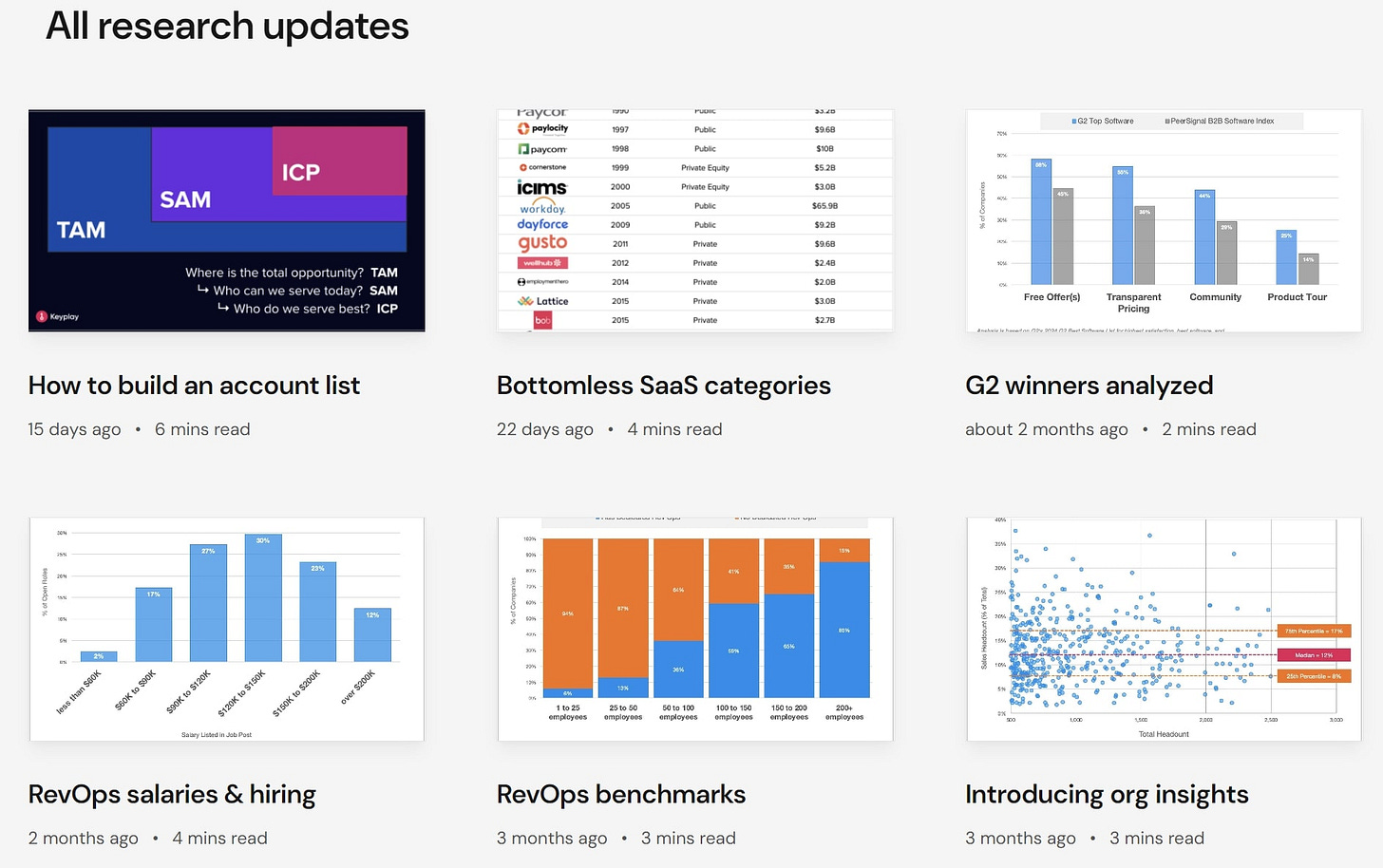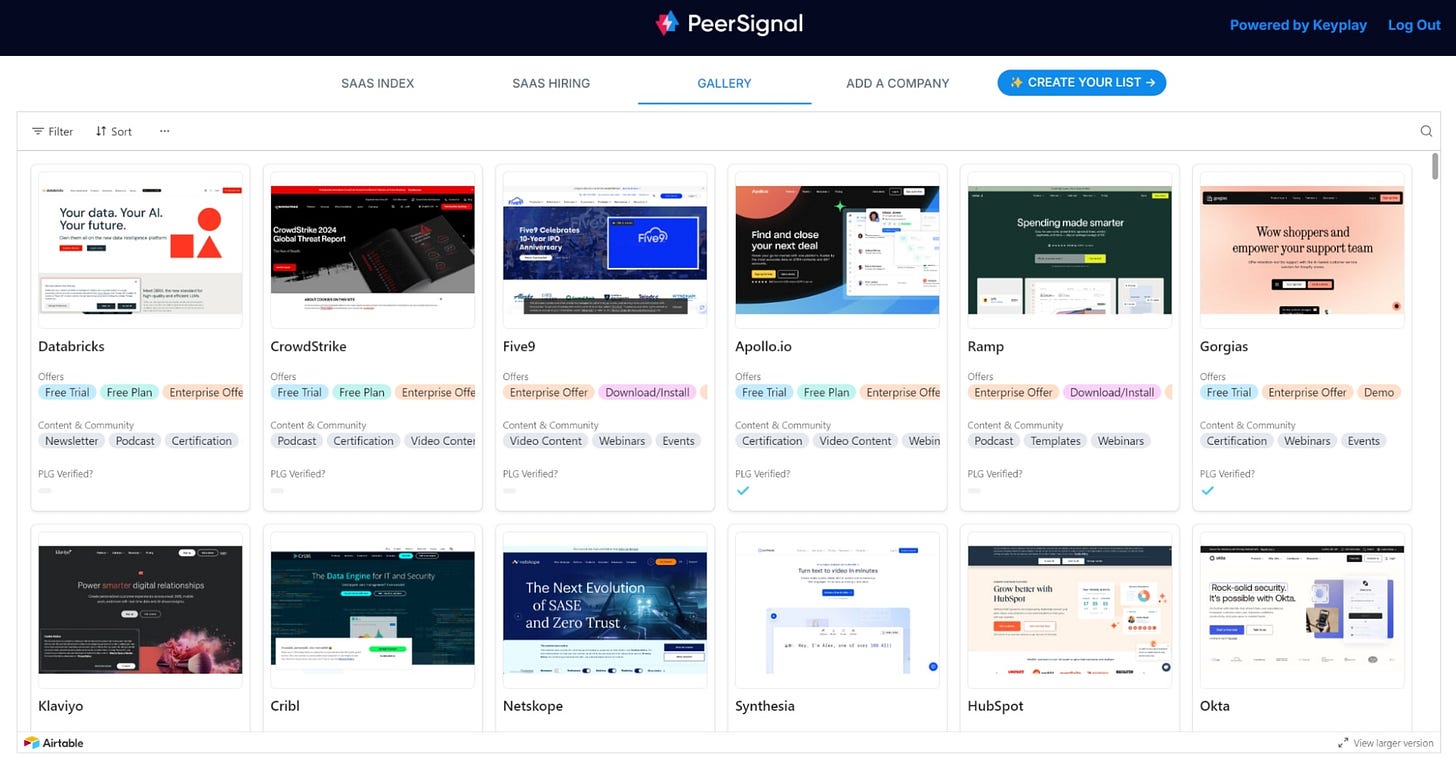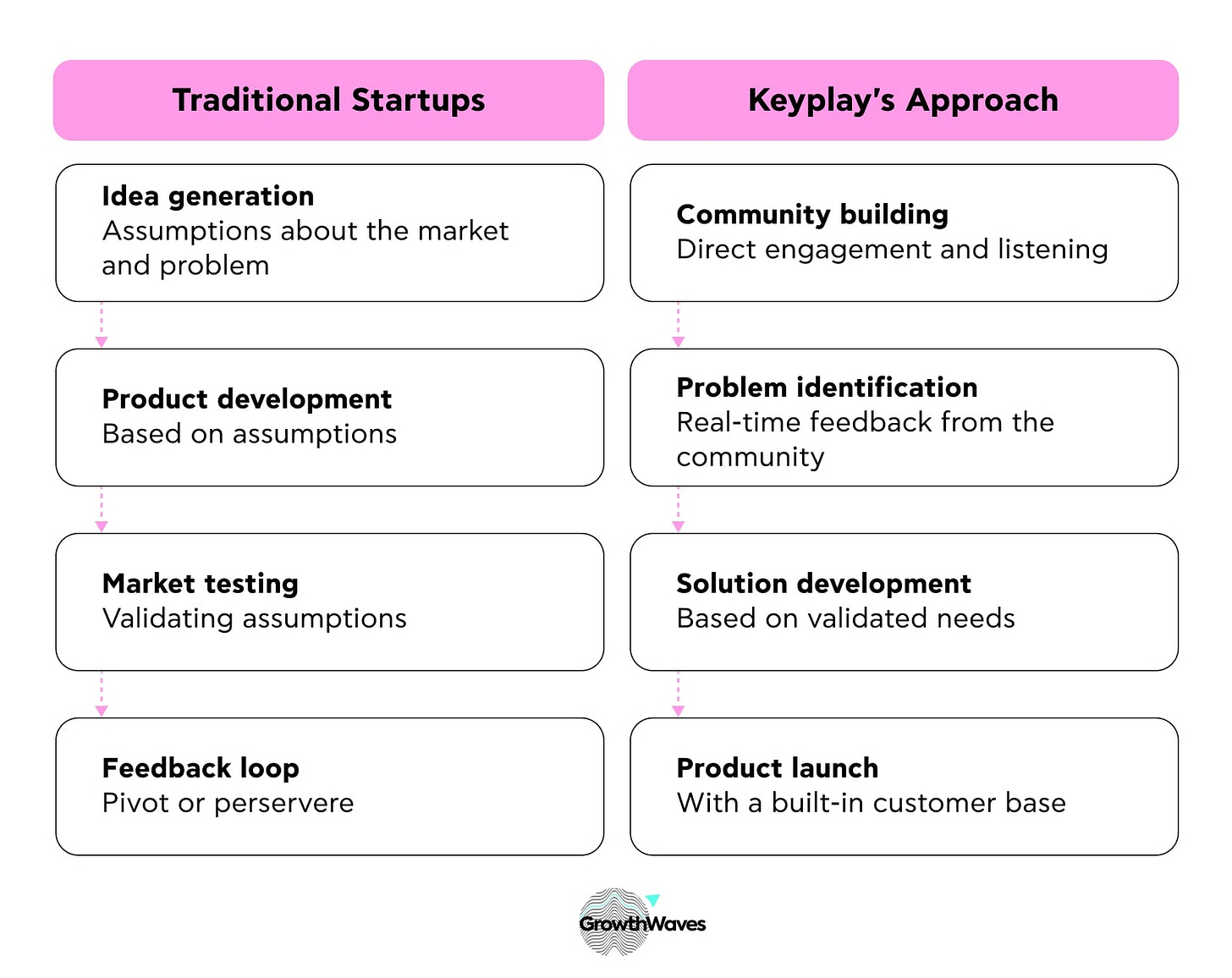Community-first GTM (Case Study)
Why Keyplay built an audience before a product
👋 Hey, I’m George Chasiotis. Welcome to GrowthWaves, your weekly dose of B2B growth insights—featuring powerful case studies, emerging trends, and unconventional strategies you won’t find anywhere else.
The typical route of building and marketing a B2B SaaS product would be similar to this:
Identify a (perceived) problem
Build a solution
Pinpoint your ICP
Tailor your product and messaging accordingly.
However, in the case of Keyplay (and its sister community, PeerSignal), things went a bit differently.
It all started from an ICP, then went onto problem identification, and finally landed on a SaaS solution.
Let’s explore this unorthodox approach.
Key findings (TL;DR)
PeerSignal is a research media company (a newsletter, but also a dataset that can be accessed for free) that grew from 0 to 18K+ subscribers in only 18 months. Without paid ads!
The PeerSignal community helped its co-founders identify a core problem within it, which could be solved with a SaaS tool. Thus, Keyplay was born.
Keyplay is a B2B SaaS platform aimed at helping SaaS businesses build their target account lists.
Keyplay’s capabilities power the research and insights presented on PeerSignal, while PeerSignal helps build awareness for Keyplay through its community – a perfect media company – SaaS platform flywheel.
(To be fair, the team’s established personal brands and followers on LinkedIn helped speed things along nicely.)
Step #1: Building a community
It all starts with PeerSignal. At its core, PeerSignal is a database of SaaS businesses with a range of information about each: their name, website, number of employees, total funding raised, last funding date, what type of offers they have, what types of content & community work they do, etc.
Here is how Camille Trent, PeerSignal’s Director of Content & Community describes it:
“It was fairly unstructured and it’s like, ‘hey, we have this interesting data. You can figure out how to use it for prospecting. You can figure out how to use it in creative ways as you can, you know, figure out how many companies are doing community. Or how many companies are doing this and that and what those signals mean for you.”
But PeerSignal is also a newsletter that provides curated data from this database, freely giving away valuable insights to its community.
Take a look at some of the topics the PeerSignal newsletter covers:

So, how did the idea for PeerSignal come about?
Here is what Adam Shoenfeld, one of PeerSignal’s co-founders, said in an interview with Kyle Poyar:
“We knew who we wanted to serve before we knew the problem they needed us to solve.”
Simply put, he and his co-founder, Andrew Rothbart, saw a gap in online B2B SaaS research and decided to fill it with this unique (and painstakingly put-together) database.
Consistency and leaning into what works
PeerSignal acquired its first 6.7K subscribers through sheer consistency. According to Adam, it all came from one newsletter per week and one LinkedIn post per week for most weeks.
At the same time, they analyzed their subscriber growth trends and paid attention to what caused growth spikes. Once they noticed a popular type of content that led to a subscriber surge, they doubled down on it.
One example of such content is screenshot galleries they compiled – one of 1000 B2B SaaS pricing pages, and another of 2042 B2B SaaS homepage screenshots.

The right place at the right time
Louis Pasteur, the French pharmacist behind some of the biggest microbiological discoveries, once said, “Chance favors the prepared mind.”
PeerSignal is a prime example of this.
With an already growing community, PeerSignal was in a great position to take advantage of an alarming wave of tech worker layoffs.
In November 2022, right after Meta announced its layoffs of over 10K employees, PeerSignal released its B2B SaaS Hiring Update, listing businesses with open positions available.
This timely release was one of the largest contributors to PeerSignal’s growth to date.
Here is what Adam said about it:
“Being in the right place at the right time is luck, being prepared to strike at the right place at the right time is strategy.”
Step #2: Identifying the right problem
Okay, so you build a community. Then what?
From day one, Adam kept his ear to the ground. He was actively engaged with the PeerSignal community, both through email and on his personal LinkedIn account.
“People started emailing “can you help with my ideal account list.” Not for research – for sales. Such an old problem, but they didn’t have a trusted solution. That’s when we began turning what started as a research project to study GTM into a SaaS-media flywheel,” Adam said.
Right away, learning what the core problem of his community was – and that they were willing to pay for a solution to this problem – put Adam and his team at a clear advantage.
After all, most startups have nothing but assumptions – assumptions as to what type of customers would use their product, what type of problems it would solve, how to promote it, etc. It’s the process of confirming these assumptions (or pivoting if they turn out not to be right) that could lead to a downfall.
But building a community first mitigates the risk of assumptions. Adam already knew who the potential customers were and what they wanted.
Now it was only a matter of building it.
Step #3: Building the solution
With such a big community at their disposal, it isn’t a surprise that Adam’s team chose to build in public.
Keyplay, PeerSignal’s sister business, came to life through community-driven development. It is a SaaS platform helping other businesses build their target account lists, narrow down their ICPs, and prioritize their market. At the same time, Keyplay provides new research and insights that can be presented through PeerSignal, while PeerSignal’s community leads to increased brand awareness for Keyplay. A perfect media company – SaaS platform flywheel is created.
Even before Keyplay was officially released, Adam revealed that it already had eight pre-launch customers.
“Our eight pre-launch customers came without a single outbound call or investor referral. We didn’t even have a website for Keyplay. 100% were curious community members who engaged.”
Here were the main benefits of community-driven development for Keyplay:
Acquired design partners to build the SaaS through inbound interest.
Received hundreds of messages with suggestions, many of which became new features in the Keyplay platform.
Acquired pre-launch customers.
Got to $100K ARR without a website or app – 100% through community hand-raisers.
Sounds like any SaaS founder’s dream, no?
Bonus: Building a personal brand
I would be remiss if I didn’t mention what I would call Step 0.
Before Adam and Andrew built a community, before they found their problem and built their SaaS, before any of that was even on the horizon, they – especially Adam – built their personal brands on LinkedIn.
Currently, Adam Shoenfeld has over 43K followers on LinkedIn. A large majority of that audience was already there at the moment of PeerSignal’s launch.
In fact, he said as much to Kyle Poyar:
“Because PeerSignal started out as just Andrew and me, we mostly relied on my LinkedIn audience to get the word out. (...) When Camille Trent came in to lead content and community at PeerSignal, we were able to double our borrowed LinkedIn audience as she started posting about our research on LinkedIn as well.”
If that isn’t one more reason to spur you into building your own personal brand on socials (especially LinkedIn), I don’t know what is.
Adam shared that the type of content that had the biggest impact on acquiring that many followers was zero-click content.
Zero-click content is a term coined by Sparktoro, and it is exactly what it sounds like – content you get immediate benefits or learnings from, without the need to click to a website or a different page to get the full message.
For Adam, giving away more than gating was key.
Lastly, it bears emphasizing that the terms audience and community are not the same thing.
An audience is listening to one person (or brand) speak. A community includes two-way communication.
So while Adam had a sizable audience at his disposal, it still took work to turn some of that into a community.
Conclusion
On a personal note, I loved this approach to developing a SaaS product.
Building a community for any product in any space requires herculean effort, and doing it upfront is just common sense. Not least because it helps you polish your product into something your ICP actually wants to invest their money in.
Is this community-first approach to developing a product the way of the future?
I sure hope so.
See you next week!


